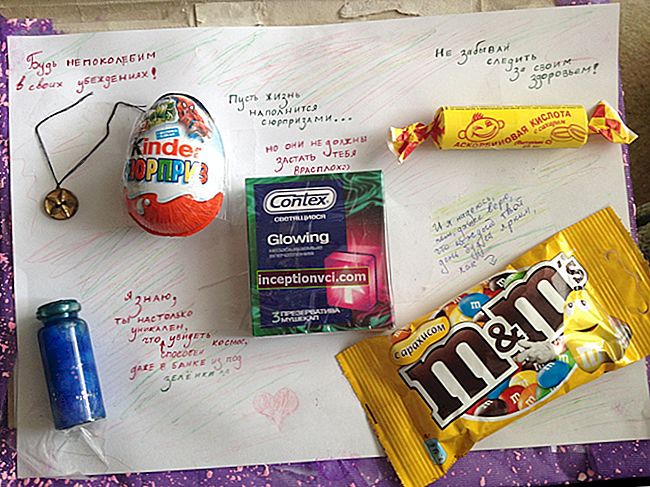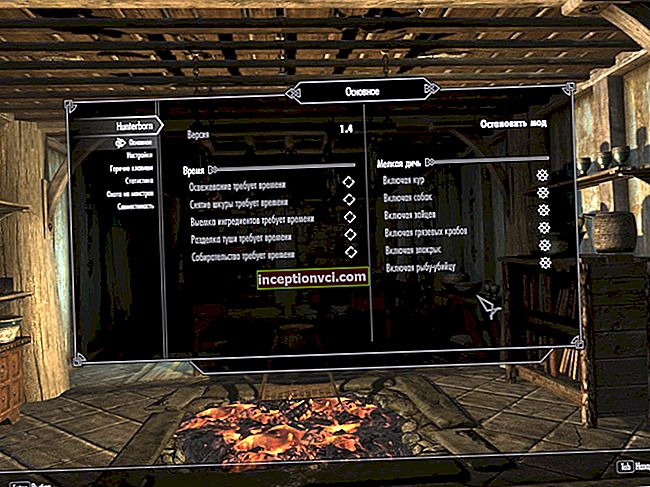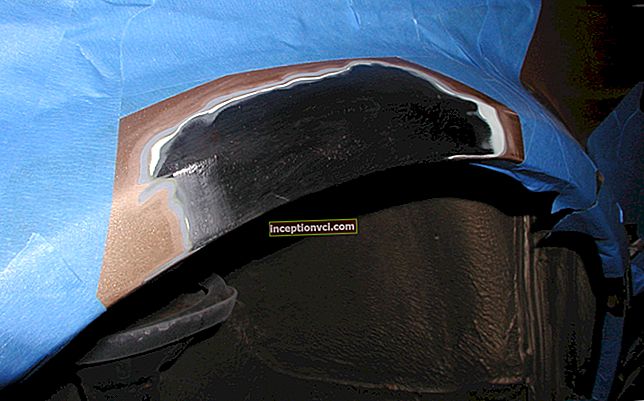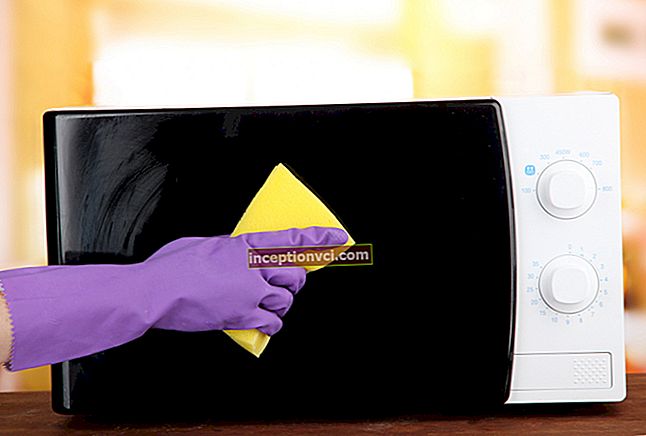Refrigerator BOSCH KGS39Z45
Technical safety
The refrigerator contains a small amount of the environmentally friendly but flammable refrigerant R600a. Please make sure that the pipes of the circuit through which the refrigerant circulates are not damaged during transportation or installation of the refrigerator. Spilled refrigerant may ignite or irritate the eyes.
In case of damage:
- do not go near the refrigerator with an open flame or any other sources of ignition,
- ventilate the room well for a few minutes,
- remove the plug from the socket,
- report damage to service.
The more refrigerant the refrigerator contains, the larger the room in which the refrigerator is installed must be. In too small rooms, if refrigerant leaks, a flammable mixture of refrigerant vapor with air can form.
For every 8 g of refrigerant, there must be at least 1 m3 of room. The amount of refrigerant contained in your refrigerator is shown on the type plate located inside the refrigerator.
Using
Never switch on any other electrical appliances inside the refrigerator (e.g. heaters, electric ice cream makers, etc.).
Never defrost or clean the refrigerator with a steam cleaner! Steam can enter electrical parts and cause a short circuit. Risk of electric shock!
Frost and ice must not be removed using objects with a sharp point or sharp edges. This can damage the pipes that circulate the refrigerant. Refrigerant splashes can ignite or inflame eyes.
Do not store aerosol cans with flammable propellants and explosive substances in the refrigerator.
Do not stand up or lean on the plinth panel, drawers, refrigerator doors and other elements of its structure.
For defrosting and cleaning, the refrigerator must be turned off, unplugged or the fuse turned off. The plug should be pulled out by the housing, not by the power cord.
Strong alcoholic drinks can only be stored in the refrigerator in a tightly sealed, upright container.
Make sure that no grease or oil gets on the plastic parts of the refrigerator and its door seal. Otherwise, these parts and the seal may become porous.
Never cover or obstruct the ventilation openings of the appliance.
Do not store liquids in bottles or cans (especially carbonated drinks) in the freezer compartment. Bottles and cans may burst!
Never put frozen food from the freezer compartment directly into your mouth.
Avoid prolonged hand contact with frozen food, ice or evaporator tubes, etc. Danger of frostbite!
General definitions
The refrigerator is designed
- for cooling and freezing food,
- making food ice.
The refrigerator is intended for household use.
The refrigerant circuit has been checked for leaks.
This refrigerator complies with the relevant requirements of the Safety Regulations for Electrical Appliances.
Getting to know the refrigerator
1-9. Control Panel 10. Light switch 11. Interior lighting 12. Pull-out container 13. Shelves in the refrigerator compartment 14. Box for vegetables and fruits 15. Box for frozen food 16. Screw feet 17. Compartment for butter and cheese 18. Egg shelf 19. Shelf for large bottles A. Refrigeration compartment (from +2 ° С to +8 ° С) IN.Freezer compartment (from -16 ° С to -32 ° С) Control Panel 1. Freezer compartment on / off button This button turns the freezer compartment on and off. 2. Super freeze button Use this button to turn the super freeze function on and off. When this function is enabled, the yellow lamp lights up. This function is used to freeze large quantities of fresh food and is activated, depending on the amount of food, up to 24 hours before loading. 3. "Аlаrm" button This button is used to turn off the warning alarm. The warning signal is triggered when the freezer compartment becomes too “warm”, that is, when frozen food can defrost. The warning signal can also be activated in cases when nothing threatens the frozen food: After the warning signal has been deactivated, the audible alarm will automatically return to standby as soon as the operating temperature in the freezer compartment is restored. 4. Indicator light "Аlаrm" At the same time, a warning signal sounds. a) Indicator light is on By pressing the "Alarm" button, the warning signal is turned off. The indicator light goes out when the operating temperature in the freezer compartment is reached. b) Indicator light flashes The frozen food is in danger, the freezer compartment was or is currently too “warm”. After pressing the button "A1arm" (4), the indicator lamp stops blinking and the warning signal turns off. The indicator light switches back to ready state. Check the appearance and smell of frozen foods to determine if they are still usable. 5. Temperature indication lamps in the freezer compartment The numbers above the temperature indicator lamps correspond to the temperatures in the freezer compartment. The glowing light shows the set temperature. The lamp flashes until the set temperature is reached. 6. Button for setting the temperature in the freezer compartment Press the button until the lamp under the required temperature value comes on. The last value set is written to memory. 7. Temperature indication lamps in the refrigerator compartment The numbers above the lights indicate the temperature in the refrigerator compartment in ° C. The glowing light shows the set temperature. If the "super" indicator light is on, it means that the super cooling function is on (see the section "Super cooling"). The lamp flashes until the set temperature is reached. 8. Button for setting the temperature in the refrigerator compartment Press the button until the lamp under the required temperature value comes on. The last value set is written to memory. 9. Fridge compartment on / off button This button is used to turn the refrigerator compartment on and off. Ambient temperature and ventilation The climate class of the refrigerator is indicated on its type plate. It shows in which ambient temperature range the refrigerator can be used. The type plate is located at the bottom left inside the refrigerator. Climatic class Permissible ambient temperature SN +10 ° С to 32 ° С N +16 ° С to 32 ° С ST +18 ° С to 38 ° С T +18 ° С to 43 ° С Ventilation The air heats up at the back of the refrigerator. The heated air must be able to evacuate freely. Otherwise, the refrigeration unit will operate at increased power.This increases energy consumption. Therefore: never cover or obstruct the ventilation openings of the refrigerator! Refrigerator connection After installing the refrigerator, you must wait at least half an hour before putting it into operation. During transport of the refrigerator, oil contained in the compressor may have entered the cooling system. Before putting the refrigerator into operation for the first time, you should clean the inside of it (see the section "Cleaning"). The electrical outlet must be easily accessible. The refrigerator must be connected to a 220-240 V / 50 Hz AC mains through a socket with a protective contact installed in accordance with the regulations. The electrical outlet must be protected with a 10A-16A fuse. For refrigerators that will be used in non-European countries, make sure that the voltage and type of current indicated on the type plate match the parameters of your electrical network. The type plate is located inside the refrigerator at the bottom left. Only a qualified technician should replace the power cord. Turning on the refrigerator The refrigerator and freezer compartments can function independently of each other. Freezer compartment Press the on / off button of the freezer compartment. A warning tone sounds. After pressing the "Аlаrm" button, the warning signal is turned off. The "Аlаrm" button lights up until the set temperature is reached. Refrigeration compartment Press the fridge compartment on / off button. The refrigerator will start producing cold. The refrigerator compartment interior light is on when the door is open. Setting the temperature Press the button for setting the temperature for the refrigerator or freezer compartment until the indicator lamp for the temperature you want comes on. The following basic refrigerator settings have been made at the factory: freezer compartment: -18 ° С refrigerator compartment: +4 ° С. Perishable food should not be stored at temperatures above +4 ° C. Operating instructions The front side of the refrigerator body is slightly heated in places, which prevents condensation from forming around the refrigerator door seal. During the operation of the refrigeration unit, drops of water or frost form on the rear wall of the refrigeration compartment, which is due to the design features of the household appliance. There is no need to scrape off the frost or collect water. The back wall defrosts automatically. The defrost water collects in the drain channel, flows into the refrigeration unit and evaporates there. As soon as the operating temperature is set in the freezer compartment, the "A1arm" indication goes out. If, after closing the freezer compartment, the door cannot be opened immediately, please wait two to three minutes until the reduced pressure inside the freezer compartment is compensated. Refrigerator doors open at different angles: Refrigeration compartment: 90 ° Freezer compartment: 180 ° Food placement Pay attention to the different temperature zones in the refrigerator compartment! Due to the circulation of air in the refrigerator compartment, different temperature zones arise: Coldest zone located at the back of the refrigerator compartment and on the lowest shelves. Store perishable foodstuffs (eg fish, sausage, meat) in the place of the strongest refrigeration. Warmest zonesa is located at the very top at the door of the refrigerator compartment. Recommendation: This is the best place to store, for example, cheese and butter. Before serving, the cheese retains its aroma and the butter remains soft. What to look for when placing products Food should be stored tightly packed or in sealed containers. As a result, the aroma, color and freshness of the products will remain unchanged. In addition, it will be possible to avoid changes in the taste of food as a result of their contact with each other, as well as discoloration of the plastic parts of the refrigerator. Indication : The shelves located inside the refrigerator compartment can be rearranged if necessary: pull the shelf towards you, lower it and then remove it from the side. It is recommended to arrange food items as follows: In the freezer compartment: frozen foods, food ice cubes, ice cream. On shelves : in the refrigerator compartment (top to bottom): flour products, ready meals, dairy products, meat and sausages. In the vegetable box: vegetables, lettuce, fruits. On the door shelves : (top to bottom): butter, cheese, eggs, various tubes, small bottles, large bottles, milk, juice bags. Special equipment The container can be removed from the refrigerator for easier loading and unloading. To do this, it should be raised. The container holder can be moved along the shelf. This shelf is for the safe storage of bottles. The bottle holder prevents bottles from tipping over when opening and closing the refrigerator door. The shelf holder can be moved. The bottle holder prevents bottles from tipping over when opening and closing the refrigerator door. Refrigeration compartment Temperature range from +2 ° С to +8 ° С. This compartment is used to store baked goods, ready-made meals, canned food, condensed milk, hard cheese, cold-sensitive vegetables and fruits (such southern fruits as, for example, tangerines, bananas, pineapples, melons, avocados, papaya, passionflower, eggplant, as well as ripening fruits), tomatoes, cucumbers, green tomatoes, potatoes. Supercooling In Super Cooling mode, the refrigerator compartment is cooled down to the lowest temperature limit within 6 hours. After that, it automatically switches to the temperature set before turning on supercooling. The super cool function should be turned on, for example: Freezer compartment Using the freezer compartment For storing frozen food For making edible ice cubes For freezing food Frozen food thaws when the door is open. In addition, the freezer compartment is heavily ice-covered. And what is more important: electricity is wasted due to increased current consumption! Freezing and storing food Buying frozen food Product packaging must not be damaged. The expiration date must not be exceeded. The temperature in the freezer in which food is stored in the store should be -18 ° C or lower. It is best to transport frozen food in an insulating bag and put it in the freezer compartment of the refrigerator as soon as possible at home. To ensure perfect air circulation inside the refrigerator, slide the frozen food drawers in until they stop. If you need to load large quantities of food, they can be stacked directly onto the shelves and the bottom of the freezer compartment. To do this, remove all frozen food boxes. Pull the box out as far as it will go, lift it at the front and then remove it completely from the refrigerator. Fill the ice cube tray 3/4 full with water and place it on the bottom of the freezer compartment.If it freezes to the bottom of the freezer compartment, then you can only separate it with some blunt object (for example, the handle of a spoon). To remove the ice cubes from the tray, you can hold it in running water for a while or bend it slightly. Super freeze If food is already stored in the freezer compartment, turn on the super freeze function a few hours before loading fresh food. Usually 4-6 hours is sufficient. If max. permissible freezing performance, it will take 24 hours. Small amounts of food can be frozen without superfreezing. To activate the super freeze function, simply press the super button. The super freeze function switches off automatically after 2.5 days at the latest. Freezing food Food should freeze to the middle as soon as possible. To preserve the vitamins, appearance and taste of fresh food, do not exceed the maximum freezing capacity. When freezing in boxes, the maximum freezing performance decreases only slightly. Freezing performance Data for max. the freezing performance for 24 hours can be found on the type plate. Max. freezing performance is achieved on the middle shelf. Make sure that fresh food to be frozen does not come into contact with food that is already frozen. So that the taste of the products does not change and the products do not dry out, they should be sealed. How to pack food correctly: You can use as packaging: film made of various synthetic materials, plastic film sleeves, aluminum foil, special containers for freezing food. All these products can be found in specialized stores. You cannot use as packaging: wrapping or parchment paper, cellophane, garbage bags, used plastic bags. To close the package, you can use: rubber rings, plastic clips, twine, frost-resistant adhesive tape, etc. Plastic bags and sleeves can be welded using a special welding machine. Permissible shelf life of frozen food when the regulator is set to the middle position fish, sausage, ready-made meals, bakery products Up to 6 months cheese, poultry, meat Up to 8 months vegetables fruits Up to 12 months Defrosting frozen food Depending on the type of food and their further use, you can choose one of the following defrosting methods: Indication Food that has thawed or completely thawed should not be re-frozen. Only after processing food (by boiling or frying) can the finished dish be frozen. But it is no longer possible to store ready-made meals as long as the products from which they were prepared. Switching off and decommissioning a household appliance Switching off the freezer compartment Click the appropriate button. Switching off the refrigerator compartment Click the appropriate button. The temperature indicator lamps go out, thereby turning off the cooling and lighting systems. Taking the refrigerator out of service If you will not use the household appliance for a long time: 1. Turning off a household appliance. 2. Remove the plug from the socket or turn off the fuse. 3. Clean the household appliance. 4. Leave the refrigerator door open. Defrosting the freezer compartment Proceed as follows Follow the instructions of the manufacturers of these products. Cleaning the refrigerator 1. Attention! Remove the plug from the socket or switch off the fuse! 2. The seal of the refrigerator door should only be wiped with a cloth soaked in clean water and then thoroughly wiped dry. 3. Clean the refrigerator with warm water and a little hand dish soap. The water used for cleaning must not enter the interior of the control panel or lighting system. 4. After cleaning, reconnect the refrigerator to the mains and turn it on. The shelves on the refrigerator door can be removed for easy cleaning. Do not use abrasive, acidic cleaners or solvents. To ensure that the melted water can drain freely, regularly clean the groove and drain hole with a stick or other similar object. The water used for cleaning must not enter the evaporator pan through the drain hole. Model characteristics Color: stainless steel Energy efficiency class A + 2 compressors Annual energy consumption: 343 kWh Total usable volume: 348 l Separate electronic regulation and temperature control Super quiet! Door stop right, reversible Refrigerator compartment: 257 l Defrost automation Automatic Super Cooling Mode 5 shelves made of impact-resistant glass, of which 4 are adjustable in height Fruit and vegetable box with dividers Additional shelf for bottles Pull-out container Freezer compartment: 91 l Freezing capacity: 8.5 kg / 24 h Storage duration in case of power outage: 22 h Super freeze mode 3 transparent boxes and 2 shelves Dimensions (H x W x D): 200 x 60 x 65 cm Connected load: 160 W




 Pull-out container
Pull-out container  Bottle shelf
Bottle shelf  Bottle holder
Bottle holder  Storing frozen food
Storing frozen food  Making food ice cubes
Making food ice cubes 










